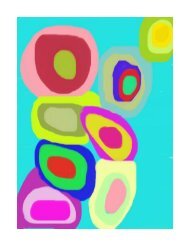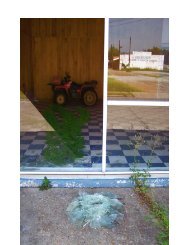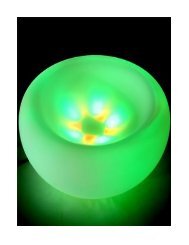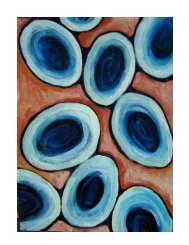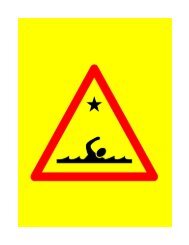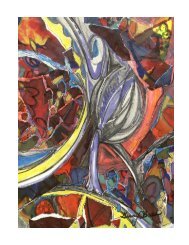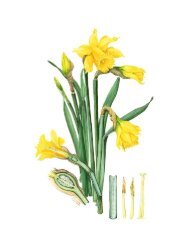Commentaries on Bob Cobbing - The Argotist Online
Commentaries on Bob Cobbing - The Argotist Online
Commentaries on Bob Cobbing - The Argotist Online
Create successful ePaper yourself
Turn your PDF publications into a flip-book with our unique Google optimized e-Paper software.
When we worked together <strong>on</strong> Domestic Ambient Noise from 1994 to 2000, I used computers quite<br />
often to write visually; and because the process worked by varying each other’s material, pixelbased<br />
d. m. p., ink jet and laser imagery entered into his body of work from me, though not<br />
exclusively from me by any means. Often in that and other work, switching between technologies<br />
was part of the process—note that <strong>on</strong>e of the filters in Adobe’s Photoshop is “photocopying”!<br />
Towards the end of his life he had a colour photocopier and produced some interesting colour<br />
material.<br />
<strong>The</strong>re are two things to be said here. One is that, by our ec<strong>on</strong>omic standards, the process was<br />
hideously expensive; and the other is a belief in <strong>Cobbing</strong>’s words that ‘there are more colours in<br />
black and white’.<br />
He and I made a couple of titles <strong>on</strong> a single pass photocopier, laying down each layer of colour<br />
separately—because that was the <strong>on</strong>ly way that our technology allowed us to do it. That was very<br />
near to silk-screening.<br />
I can’t remember any poetry as such that he made al<strong>on</strong>e <strong>on</strong> that single pass copier, although that<br />
may just be my memory; but colour appears in some Writers Forum publicati<strong>on</strong>s.<br />
With the later machine, acquired around the turn of the millennium, <strong>on</strong>e saw him beginning to<br />
take c<strong>on</strong>trol. It was easy to get some results—with the earlier machine there was the<br />
compensati<strong>on</strong> of working with another for all that effort, and he liked co-operative working—and<br />
he started to use them and, as it were, train them.<br />
And throughout he was using found materials and not necessarily treating them.<br />
<strong>Cobbing</strong>’s poems were always for performance. In the 60s he was producing “eye versi<strong>on</strong>” and<br />
“ear versi<strong>on</strong>”. (He wasn’t really a c<strong>on</strong>crete poet as I was taught to understand that term.) He<br />
developed the landscape versi<strong>on</strong> of a poem and that’s largely an aural landscape.<br />
At the same time, he was happy to explore or have explored other ways of notating potential<br />
sound. Note, for example, his acceptance of the visual treatment of ‘Variati<strong>on</strong>s <strong>on</strong> a <strong>The</strong>me of Tan’<br />
from Sound Poems/ABC in Sound—recently brought back into print by Writers Forum. That is not<br />
his visual versi<strong>on</strong> although the typewritten text is his; but it is now how most of us know it. And<br />
note also his collaborati<strong>on</strong> with Lawrence Casserley which, in the case of ‘Hydrangea’ produced<br />
two versi<strong>on</strong>s. <strong>The</strong> first was in the mid-70s, an image sourced in dry print, made up of the letters of<br />
the word. <strong>The</strong> sec<strong>on</strong>d, in the mid-80s, was more of a musical score, still allowing a c<strong>on</strong>siderable<br />
degree of improvisati<strong>on</strong>—four of us performed it in the autumn of 2003 and there was plenty of<br />
scope for inventi<strong>on</strong>—putting some guidelines down for what might (not what might not) be d<strong>on</strong>e.<br />
Sometimes he would read a text very closely, other times loosely. I have noted an instance when he<br />
read a flier of mine advertising readings, but upside down. Sometimes he would read the room as a<br />
text. (Reading in this c<strong>on</strong>text of course means starting from but moving out from a text.)<br />
Thus, the visual manipulati<strong>on</strong>s, xeroxographic or otherwise, were not entirely an end in



